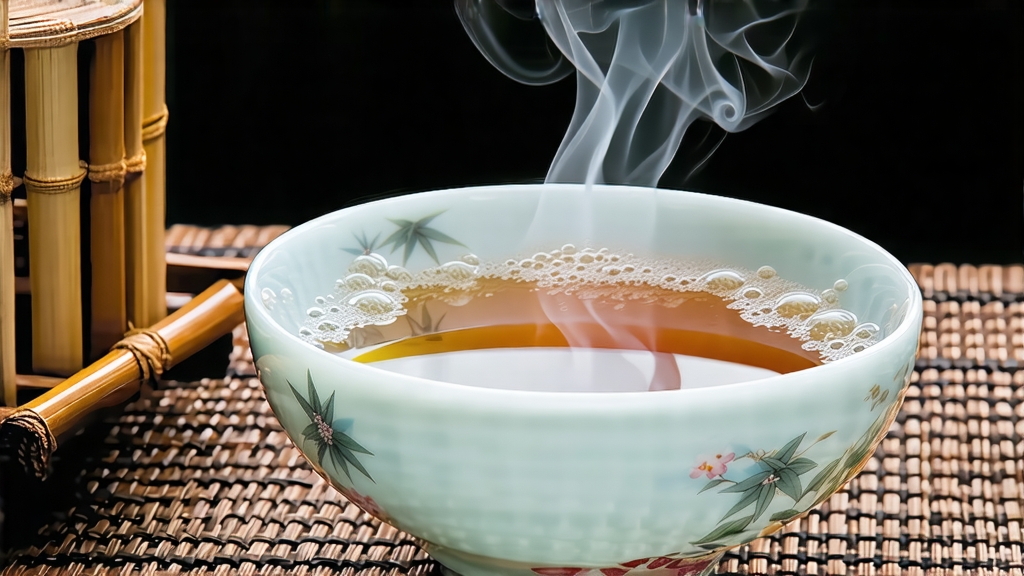
Ask most Western drinkers to name a Chinese black tea and they will probably say “Lapsang Souchong,” yet few realize that this charismatic, campfire-scented leaf was the very first black tea ever created, the prototype that launched the entire category now grouped in China as hong cha. Its story begins in the early seventeenth century among the sheer granite cliffs of the Wuyi Mountains in Fujian Province, where cool mist, mineral soils and a forest of pine and cedar created the perfect stage for an accident of history that became a legend.
Local lore agrees on the outline: late in the Qing dynasty Ming loyalist troops passed through the tea hamlet of Tongmu, billeting themselves in the outlying factories. The soldiers demanded bedding space on the bamboo trays where fresh leaves, already withered for green tea, were waiting to be pan-fired. By the time the troops moved on the leaves had oxidized far beyond the familiar green style. In desperation the farmers rushed the darkened leaf to market, drying it over open pine fires to mask the musty edge. To everyone’s surprise European traders camped at the port of Xiamen paid a premium for the smoky, wine-dark liquor, and “Bohea” (a corruption of “Wuyi”) became the first Chinese tea to reach London, Amsterdam and Paris. Thus was born Lapsang Souchong—literally “smoky variety from the small mountain,” the name later coined by tea officers to distinguish the authentic Wuyi leaf from imitations.
Today the State Council designates Tongmu village and its 156 square-kilometre core zone as a protected origin; only leaf picked within this UNESCO buffer may legally bear the name Zheng Shan Xiao Zhong, “Original Mountain Small Sort.” Altitude ranges from 600 m to 1 400 m, the air perpetually infused with resinous terpenes from masson pine, Chinese red pine and camphor laurel. These volatiles are the invisible ingredients that give true Lapsang its signature nose: not blunt tar, but a complex perfume that marries dried longan, cacao, and the sweet resin of fresh-cut Christmas trees.
Three cultivars dominate the gardens: Cai Cha (a small-leaf landrace prized for fragrance), Zheng He Da Bai (a large-leaf variety that lends body), and the newly selected Wuyi Qizhong 1号, bred for cold tolerance and higher catechin conversion. Picking follows the Chinese solar calendar: the first flush begins when the Qingming festival is ten days away, the second around Guyu, and a lighter autumn picking in October. Only the standard “two leaves and a bud” plucked before 10 a.m. is accepted; anything larger is diverted to cheaper Wuyi rock oolong production.
Processing begins within minutes of plucking. The leaves are first laid in shallow bamboo trays set on racks inside the second floor of three-hundred-year-old wooden houses. Here, withering is achieved not by sun but by gentle heat rising from ground-floor pine embers, a technique called wen fu—“warm hutch.” Over six to eight hours the leaf loses about 65 % of its moisture while absorbing low levels of smoke; the goal is to soften cells for rolling without fixing the green character. Masters judge readiness by the tell-tale sound: a handful of leaves shaken in the tray must rustle like silk taffeta.
Rolling follows the traditional “pine board knead.” A 15 kg batch is wrapped in a square of wet cotton cloth and rolled across a pine plank by a barefoot worker who shifts his weight in slow, tai-chi-like arcs. The pressure is calibrated to fracture cell walls just enough to release polyphenol oxidase, initiating oxidation while preserving the integrity of the tip. After thirty minutes the bundle is opened, fluffed, and left to oxidize in chest-deep bamboo baskets lined with banana leaf. Temperature is held at 24 °C with 80 % humidity; every fifteen minutes the tea is gently turned to ensure even browning. When the leaf reaches a coppery mahogany and the green bite has vanished, oxidation is halted by the decisive act that makes Lapsang unique: smoking.
Unlike the crude “liquid smoke” shortcuts used by foreign imitators, authentic Tongmu smoking is a layered ritual. The floor of the long, narrow firing room is a shallow pit filled with embers of locally cut masson pine that has been